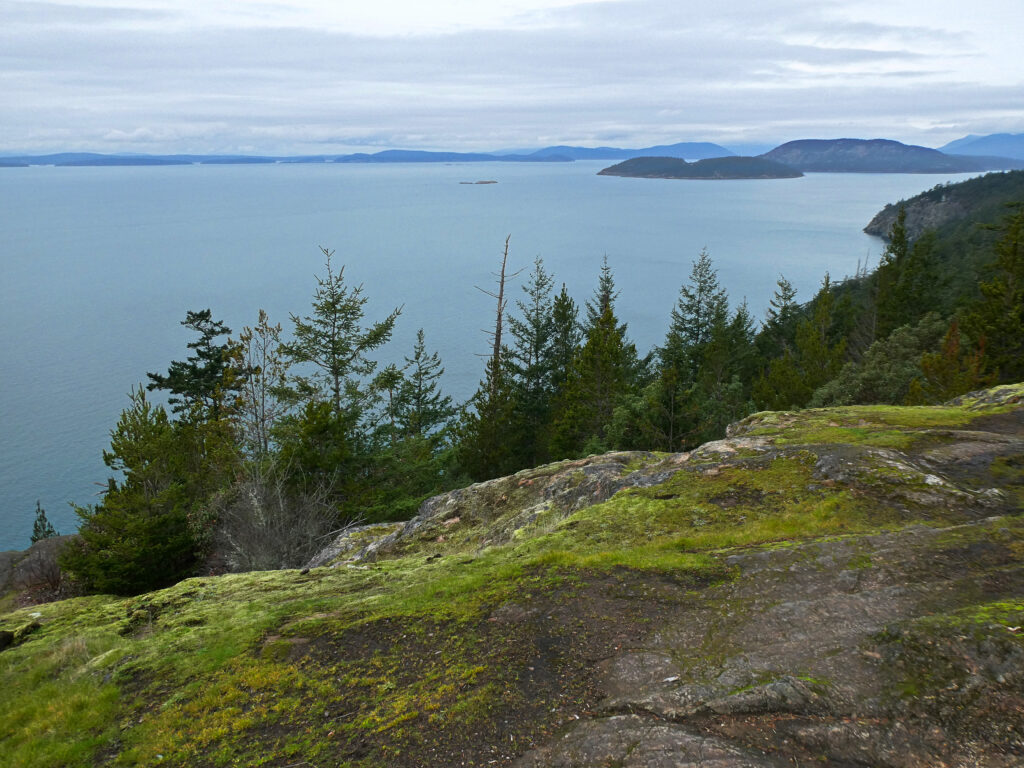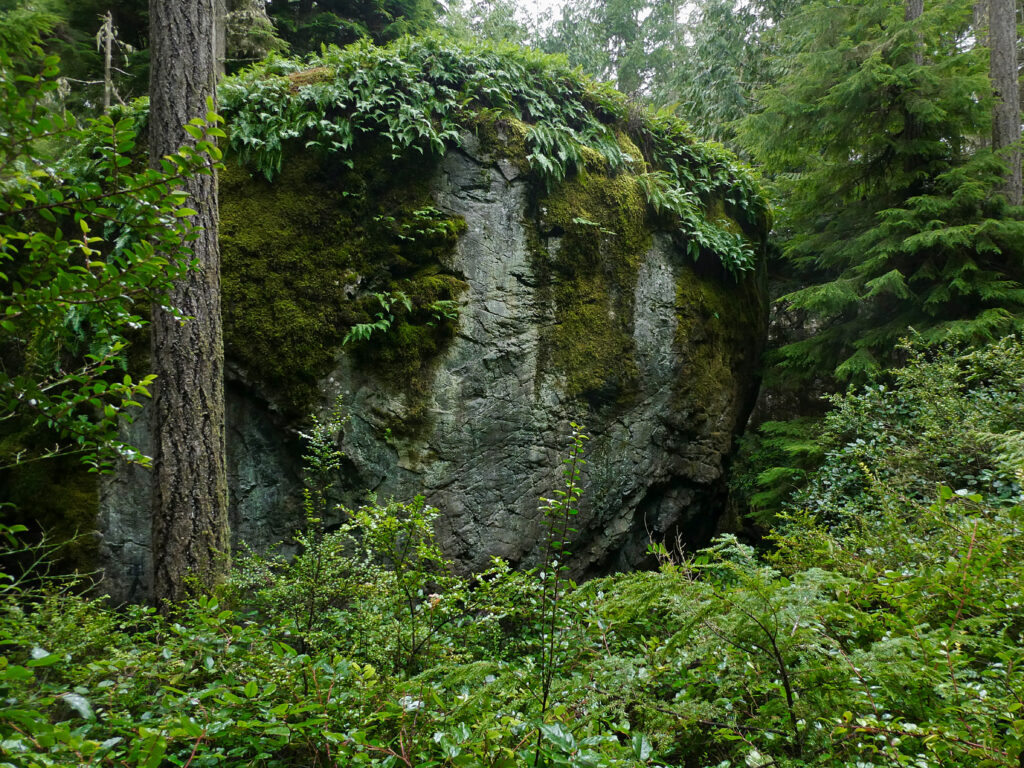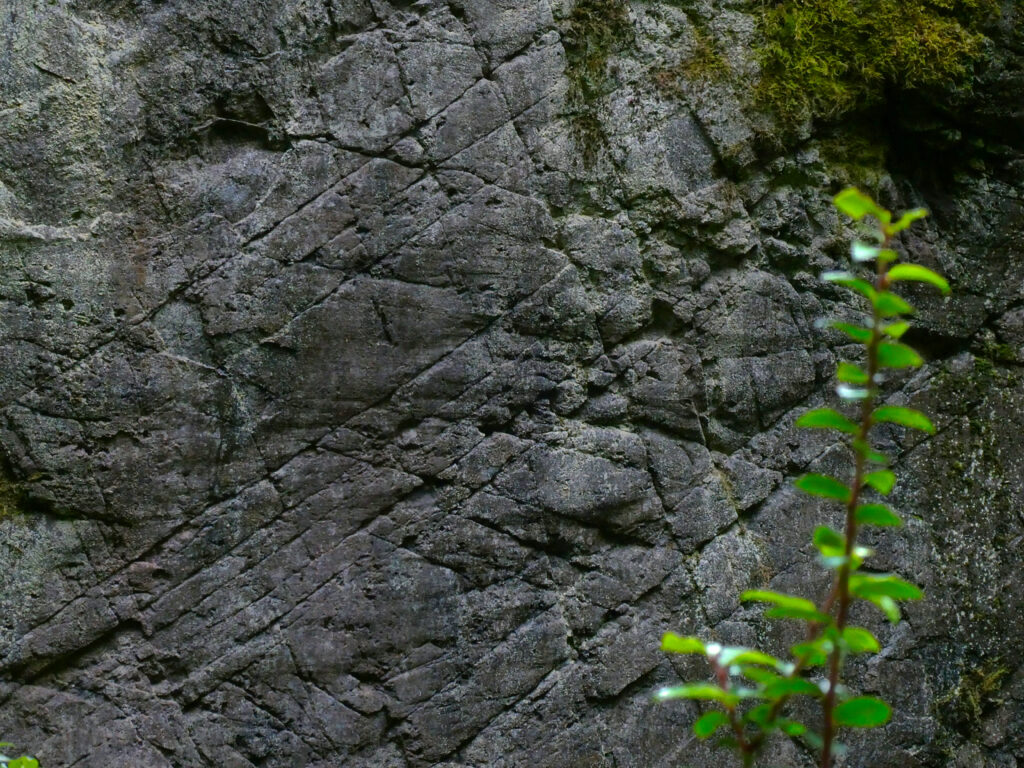Whidbey Island’s Geologic Past.

Upon reading the most simple bits of geology, anyone can deduce that the Puget Sound region is heavily geologic. We sit right next to a major tectonic subduction zone and the entire region itself was sculpted by glaciers. During the last ice age – around 17,000 years ago – massive glaciers covered the region, carving out the Puget Sound and even shaping the Cascade Mountains. For example, that is why the west side of the Cascades are far more “rocky and dramatic” than the eastern side, which is more gentle. By massive glaciers, I mean MASSIVE! These glaciers were thousands of feet high. Although these behemoth glaciers are long gone, they leave behind a plethora of remnants for modern populations of people to marvel at.
When a glacier moves across the ground, it can significantly shape and/or alter the landscape. Such alterations can include weathering, glacial erratics, and scratch marks. One of the most noticeable are glacial erratics. They are simply large boulders deposited at some point by a glacier. When a glacier moves across the ground, they can erode away large boulders. In some cases, these rocks stay whole and travel along within the glacier. Some time during the journey – due to the glacier receding or some other disturbance – the rock is deposited, in some cases great distances from its original location.
One of the largest known glacial erratics in the region is Waterman Rock. This erratic currently rests in the southern end of Whidbey Island near the town of Langley, Washington, and is the second largest erratic in Washington State. This boulder is made out of a type of rock known as greenschist. Greenschists are metamorphic rocks which were heated to a maximum of nearly 900 degrees Fahrenheit. This may seem like a lot, but these temperatures are only hot enough to recrystallize the existing minerals in the rock. The product of the recrystallization results in the formation of minerals such as chlorite, serpentine, actinolite, and epidote. The abundance of these certain minerals gives greenschists their greenish tint.
Although Waterman Rock is found in the Saratoga Woods near Langley, it is believed to have originated from around 40 miles away. Waterman Rock matches the rock composition of Mt. Eerie on Fidalgo Island. Although there is no way of truly knowing where it came from, Mt. Eerie is the closest match. In this case, that makes Mt. Eerie the most probable location for Waterman Rock’s point of origin.
Fun Fact! Mt. Eerie and Waterman Rock alike are part of a larger complex of rocks known as an ophiolite. An ophiolite is a fragment of oceanic crust which was uplifted onto a continental crust plate. Hence the name, oceanic crust is found almost completely under the ocean and differs in composition from continental crusts. While continental crust is made out of lighter granitic rocks, oceanic crust is produced from heavier volcanic basalts erupting from the ocean floor. Mt. Eerie is one of only a handful of ophiolites found in North America.

After walking through the dense forest, the trees suddenly opened up around 30 feet from the massive boulder. The forests up here are so dense that if you weren’t looking for Waterman Rock, you wouldn’t find it. This glacial erratic is truly massive. It measures in at 38 feet high and with a 155 foot circumference, completely dwarfing anyone right next to it!
Glacial erratics are defined by their out-of-place appearance. This boulder is no exception. Close up, Waterman Rock appears almost unworldly. Freezing cold to the touch, the dramatic rock face almost resembled the battered hull of an ancient alien spaceship. A dozen feet above, ropes of moss hung over the rockface, originating from the meadow of ferns growing on the top of the boulder. It was an overcast day with occasional rainfall, and the saturated moss hanging from the boulder’s summit dripped the collected water. Descending down the rockface, the drops of rainfall glimmered in the even, overcast light; giving the glacial erratic an even more mysterious ambience.
Above, on the surface of the erratic, was a series of parallel and perpendicular scratch marks. From far away, they looked obvious. However, the boulder is so tall that they were completely hidden from one standing right next to it. I can understand how ancient cultures would see these marks and think they were the work of mystical divine entities. Without scientific knowledge, there would be no explanation for the lines adorning this rockface. Present day, we know that they were caused by rocks trapped inside the glacier, scraping against the bedrock. As the glacier moved over the boulder, the rocks would carve out lines in the rockface.
Throughout the Puget Sound region, we are constantly reminded of our geologic past. Although these past events may appear violent and destructive, destruction is only a part of larger creation. Without these events, modern day Puget Sound would not exist. Today, these remnants remain, linking together past and future and reminding us how the world constantly changes.
